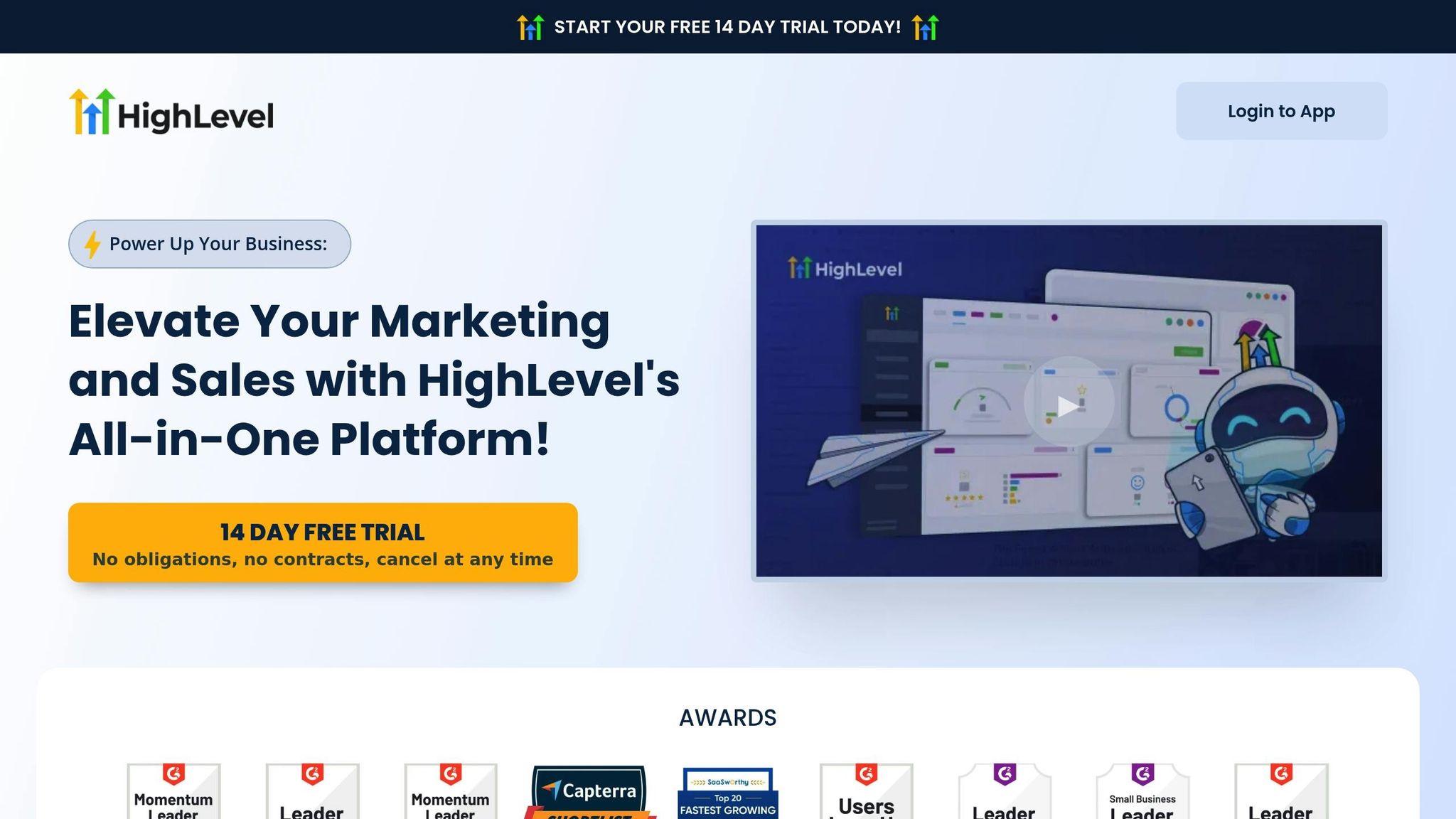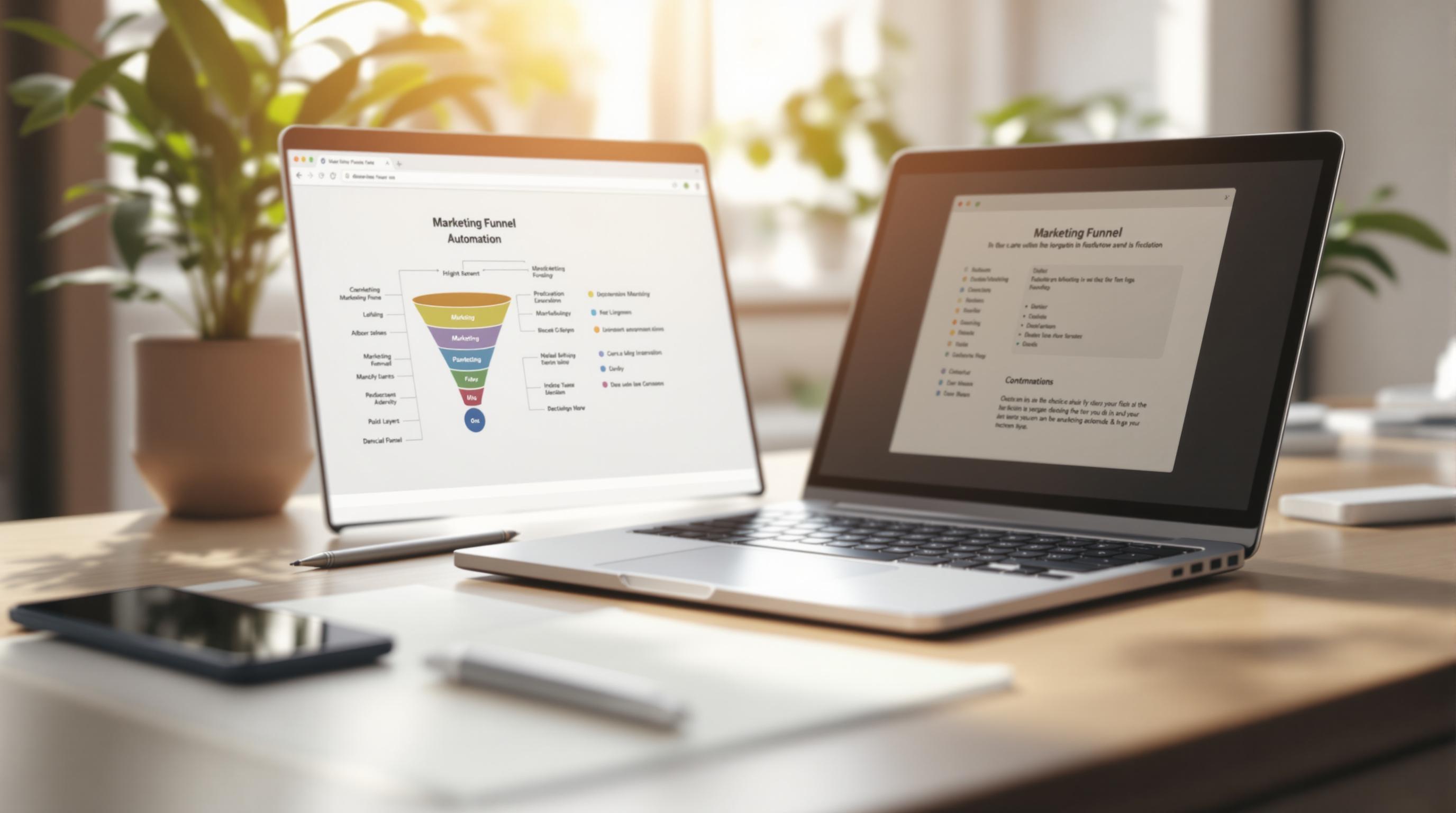HighLevel reporting dashboards turn raw data into clear insights, helping agencies track performance, improve campaigns, and showcase results. Here's what you can expect:
- Key Features: Monitor ad ROI, track calls, analyze performance, and create custom reports.
- Setup Tips: Assign user roles (Admin, Manager, Viewer, etc.), integrate tools like Google Ads or Facebook Ads, and map metrics for consistency.
- Customization: Personalize dashboards with branding, widgets, and visualizations tailored to your needs.
- Advanced Tools: Use filters for time, location, or campaigns and analyze metrics like ROI, conversion rates, and call data.
Quick Tip: Keep dashboards simple, update regularly, and focus on actionable insights to make smarter decisions. Ready to dive in? Let’s get started.
Complete Guide to Reporting Features inside of HighLevel ...

Dashboard Setup Guide
Set up your HighLevel dashboard with precise user permissions and integrate external tools to safeguard data and streamline marketing performance tracking.
User Access Setup
Managing user access is key to protecting data and fostering teamwork. HighLevel offers features to assign roles that align with your team's responsibilities. Here’s a breakdown of common access levels:
| Access Level | Permissions | Best For |
|---|---|---|
| Admin | Complete control over dashboard settings and configurations | Agency owners, senior managers |
| Manager | Access to view and edit dashboards and reports | Account managers, team leads |
| Viewer | Read-only access to specific dashboards | Clients, junior team members |
| Custom | Permissions tailored to unique needs | Specialized roles |
- Assign role-based permissions with clear guidelines.
- Limit data visibility to safeguard sensitive information.
- Provide clients with a branded, restricted dashboard view through a client portal.
Once user roles are in place, you can connect external tools to enhance your dashboard's functionality.
Adding External Tools
To integrate external tools, follow these steps:
-
Platform Authentication
Use secure API connections to authenticate each platform, ensuring smooth and accurate data transfers. -
Data Source Configuration
Set up data sources to monitor key performance metrics. Here are some examples:Platform Key Metrics Google Ads Cost per click, conversions, ROI Facebook Ads Reach, engagement, cost per lead Call Tracking Call duration, conversion rate Email Campaigns Open rates, click-through rate -
Metric Mapping
Align metrics from external platforms with dashboard widgets. This ensures consistent metric definitions across all tools, making your insights more actionable.
Creating Custom Dashboards
Design HighLevel dashboards to focus on your agency's key metrics, helping you make informed, data-driven decisions.
Widget Setup and Layout
Choose widgets that showcase your agency's most important KPIs. For instance, you could include:
| Widget Type | Key Metrics |
|---|---|
| Revenue Overview | Total revenue, MRR, conversion rate |
| Lead Generation | New leads, form submissions, call tracking |
| Campaign Performance | ROI, cost per acquisition, ROAS |
| Client Activity | Active campaigns, response rates |
Organize related metrics together and emphasize critical data for quick insights. Once you've selected your widgets, move on to customizing the display.
Custom Display Options
Make your dashboard truly your own with these personalization options:
-
Branding Elements
- Incorporate your agency logo.
- Use custom color schemes that align with your brand.
- Edit widget headers and descriptions to fit your style.
-
Data Visualization
- Choose from chart types like bar charts, line graphs, or pie charts.
- Set custom date ranges to track trends effectively.
- Adjust real-time data refresh intervals to ensure up-to-date insights.
-
White-Label Features
- Remove HighLevel branding for a completely tailored appearance.
- Adjust domain settings to align seamlessly with your brand.
- Create client-specific views tailored to their individual reporting needs.
Keeping Your Dashboard Relevant
To keep your dashboard useful, update it regularly. Evaluate widget performance, remove elements that aren't adding value, and introduce new ones as your goals change. Regular tweaks ensure your dashboard stays aligned with your agency's priorities.
sbb-itb-f031672
Advanced Data Analysis Tools
HighLevel's reporting features provide detailed insights to help you make informed, data-driven decisions.
Understanding Analytics Reports
Analytics reports break down campaign performance with detailed attribution data. The platform tracks key metrics across various channels:
| Metric Category | Key Data Points | Insights Provided |
|---|---|---|
| Campaign Attribution | Source tracking, conversion paths, touchpoint analysis | Highlights the most effective marketing channels |
| Conversion Metrics | Form submissions, call tracking, appointment bookings | Evaluates how well your campaigns generate leads |
| Revenue Analytics | Sales tracking, ROI calculation, revenue forecasting | Connects marketing efforts to financial results |
When reviewing these reports, look for patterns and trends that can guide your marketing decisions. Pay close attention to conversion rates by channel and campaign type to allocate resources effectively. Additionally, analyzing call center metrics can further refine your operational strategies.
Call Center Metrics
The call tracking dashboard provides insights into your team's phone performance. Key metrics include:
- Average call duration
- Call volume by time of day
- First-time resolution rates
- Agent response times
- Call outcomes and conversion rates
These metrics help identify peak call times, streamline staff schedules, and enhance agent training. By combining call center data with overall campaign insights, you can better evaluate your strategies. Monitoring both inbound and outbound calls ensures a complete picture of phone operations.
Data Filtering Options
HighLevel's filtering tools enable you to focus on specific data segments for more precise analysis. Key filtering options include:
1. Time-Based Analysis
Set custom date ranges to track performance over different periods. This allows you to compare:
- Week-over-week growth
- Monthly trends
- Seasonal changes
- Year-over-year performance
2. Geographic Segmentation
Adjust timezone settings to ensure accurate data for clients operating across multiple regions. This is especially useful for location-specific campaigns.
3. Campaign-Specific Filters
Drill down into data by:
- Marketing channel
- Campaign type
- Client account
- Lead source
- Custom tags
These filters help pinpoint which strategies are most effective and where improvements are needed. Regularly updating your filter settings ensures you’re working with the most relevant data.
Data Display Tips
Clear Dashboard Layout
To design a dashboard that works effectively, focus on organizing data in a logical way and grouping related metrics.
-
Strategic Widget Placement
Place important KPIs in the top-left corner, where users are most likely to look first. Arrange widgets to create a natural flow, such as pairing conversion metrics with cost data for quick ROI assessments. -
Visual Hierarchy
Use consistent color schemes to highlight key metrics. Choose colors carefully to draw attention to urgent issues, completed goals, and additional context. -
Managing Data Density
Avoid overcrowding by including only essential widgets. Create dashboards tailored to specific roles and objectives. For example:
| Dashboard Type | Key Metrics | Update Frequency |
|---|---|---|
| Executive Overview | Revenue, ROI, Lead Volume | Daily |
| Campaign Performance | CTR, CPC, Conversion Rate | Real-time |
| Client Reports | Custom KPIs, Goal Progress | Weekly |
A well-structured dashboard makes it easier to turn raw data into actionable insights.
Data-Based Decisions
A clean and organized layout simplifies data interpretation, making it easier to act on what you see.
-
Trend Analysis
Compare current metrics with historical data to spot unusual patterns or new opportunities. -
Combining Context
Bring together different data points, like lead form completion rates and call durations, to get a clearer picture of lead quality. -
Actionable Alerts
Set up notifications for key changes - such as a drop in conversion rates or rising CPA. Use these alerts to investigate issues, analyze performance by channel, or adjust form fields to improve lead quality.
Conclusion
HighLevel reporting dashboards provide a solid platform for agencies aiming to grow through data-driven strategies. By bringing together key metrics and offering real-time insights, these dashboards empower agencies to make smarter decisions that directly impact their success.
The strength of HighLevel dashboards lies in turning raw data into practical insights. When set up effectively, they allow agencies to:
- Measure client ROI with accuracy
- Spot opportunities for improvement instantly
- Showcase clear campaign results
- Simplify reporting processes
To get the most out of your dashboards, focus on keeping layouts clear and reviewing data regularly to ensure insights stay relevant and actionable. This approach helps your reporting system adapt to both your agency’s and clients’ evolving needs.
For those ready to take it further, dive into advanced dashboard features for even deeper analysis. Check out HL Max's resource library for tutorials on custom widget setups and full dashboard personalization. These tools can help unlock HighLevel's full potential for your agency.



